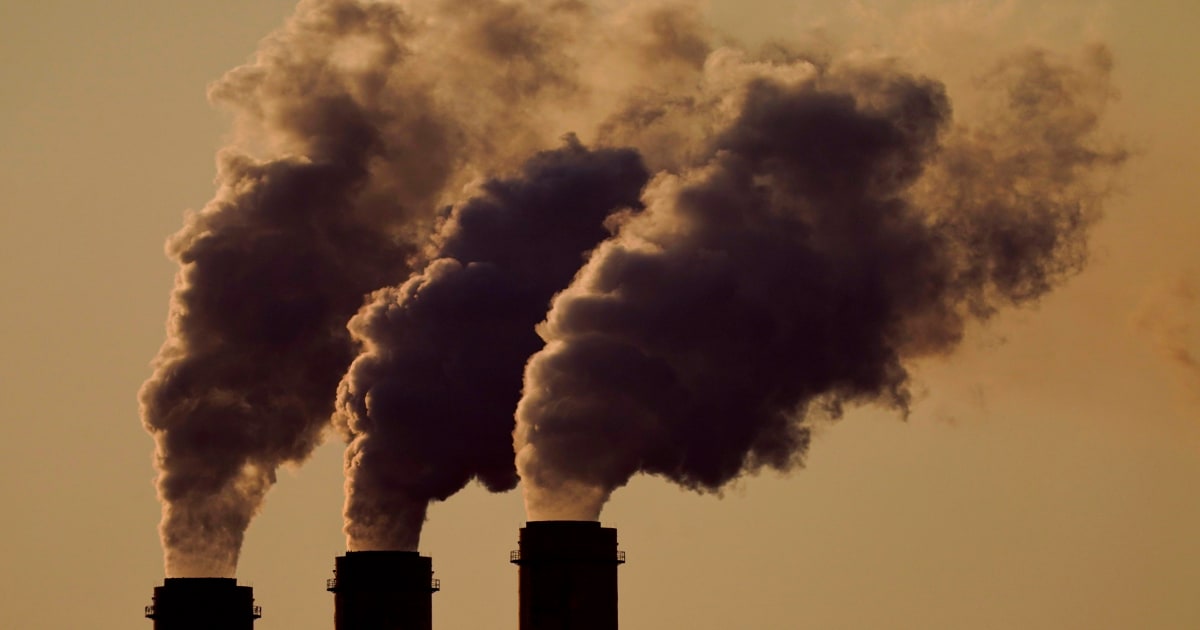WASHINGTON — The Supreme Court on Thursday blocked a Biden administration environmental regulation aimed at curbing harmful air pollution that crosses from one state to another and contributes to the formation of smog.
In doing so, the court on a 5-4 vote granted requests from three Republican-led states — Indiana, Ohio and West Virginia — and various affected industries, including natural gas pipeline operators. The decision is a provisional one, with litigation continuing.
The Environmental Protection Agency regulation applied to 23 states, although lower court rulings meant it was already blocked in a dozen of them.
Environmental groups that had joined together to defend the rule, including the Sierra Club and Environmental Defense Fund, decried the decision.
“Today’s decision is deeply disappointing. It will result almost immediately in pollution that endangers the health of millions of people,” the groups said in a statement.
West Virginia Attorney General Patrick Morrisey, among those challenging the regulation, said in a statement the litigated rule would put additional stress on the power grid.
“This decision by the Supreme Court is correct but the EPA will keep trying to legislate and bypass Congress’s authority,” he added.
In the majority opinion, Justice Neil Gorsuch wrote that the EPA’s decision to implement the rule even though it was partially blocked was part of the problem, as the agency did not address how effective the regulation would be if only partly in effect.
The government failed to show “whether the cost-effectiveness analysis it performed collectively for 23 states would yield the same results and command the same emission-control measures if conduct for, say, just one state,” Gorsuch wrote.
Conservative Justice Amy Coney Barrett sided with the court’s three liberals in disagreeing with the outcome.
She wrote that the court had blocked a major air pollution rule “based on an undeveloped theory that is unlikely to succeed on the merits” when the legal question is finally adjudicated.
The Supreme Court, which has a 6-3 conservative majority, is skeptical of broad exertions of federal power on regulatory issues, including the environment.
As a result, it is receptive to legal challenges mounted by Republican attorneys general and industry groups that have long griped about the EPA’s aggressive use of its regulatory powers.
The EPA’s “good neighbor plan” was announced last year in a bid to curb nitrogen oxide pollution from industrial facilities. If implemented in full, it would apply to 23 “upwind” states whose emissions can contribute to pollution in “downwind” states.
The EPA said the plan, based on a requirement in the Clean Air Act, would help prevent premature deaths, reduce emergency room visits and cut asthma symptoms by limiting the amount of smog.
Typically, states get a chance to draw up their own pollution control plans. Each state is required under the Clean Air Act to be a “good neighbor,” meaning that it should address pollution that can contribute to other states not meeting their own obligations.
The EPA can step in to adopt its own plan, which is what happened last year. The three states complained about the federal government’s approach, saying in part that they didn’t have enough time to come up with their own plans.
In two other important recent environmental cases at the Supreme Court, the EPA lost both times.
In 2022, the court limited the ability of the agency to use the Clean Air Act to combat emissions that contribute to climate change. Last year, the court weakened the landmark Clean Water Act by limiting the EPA’s regulatory oversight over wetlands.
#Supreme #Court #blocks #EPAs #interstate #air #pollution #regulation,
#Supreme #Court #blocks #EPAs #interstate #air #pollution #regulation
